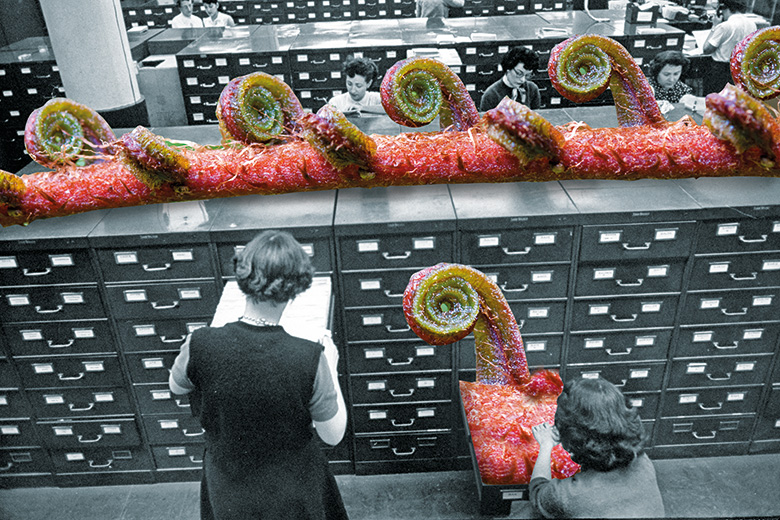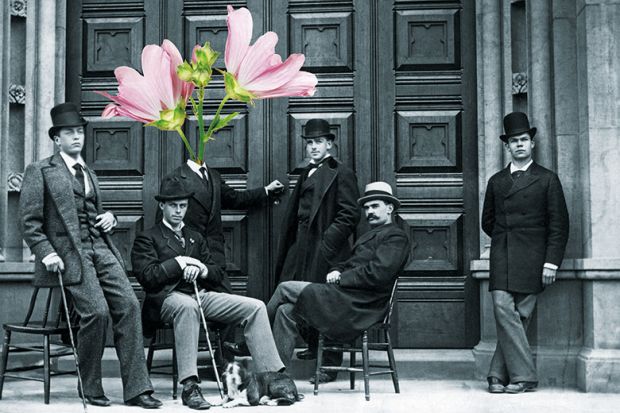View the results of the 2017 Young University Rankings
Starting a university from scratch might seem like a foolhardy exercise in hubris to many academics.
How could even the most promising start-up hope to lure students away from institutions with decades or even centuries of academic excellence and seductive campuses buzzing with thousands of students?
Higher education is, however, booming. According to a 2012 report by the British Council, titled The Shape of Things to Come, total global tertiary enrolments are likely to grow by 21 million between 2011 and 2020; an average of 1.4 per cent a year. And with some established universities unable or unwilling to expand – either because of the physical limits of their campuses or their attachment to the reputational benefits of high selectivity – new providers are emerging, both in established sectors and growth markets. Many believe they can not only compete with their established rivals, but, free from legacy baggage, can also inject some serious innovation into a sector that can often seem quite conservative. Here, we profile some of them.
Breaking the mould in India
Apeejay Stya University
“Establishing a university was a long-held ambition for my family, but we didn’t want to set up just another university,” says Aditya Vijay Berlia, who co-founded Apeejay Stya University, India’s first “industry-centric technology and liberal arts university”, in 2010.
Part of one of India’s most famous industrial families – his late grandfather was the billionaire businessman Stya Paul, whose brother is the British-Indian steel tycoon Lord Paul of Marylebone – Berlia has experienced first-hand some of the best higher education institutions in the world, having taken his undergraduate degree at Stanford University and an MBA at Harvard Business School. However, he tells Times Higher Education that he sensed a new model of higher education was required for today’s students – particularly in India, where educators have long bemoaned the fact that innovation is stymied by the country’s all-powerful regulator, the University Grants Commission.
“So we took a step back and consulted some world-leading academics to think [about] what the ideal university would look like if we could push the reset button,” says Berlia, who holds the title of pro-chancellor at Apeejay Stya.
With advisers including ex-Stanford provost John Etchemendy and Baroness Blackstone, the former UK education minister and master of Birkbeck, University of London, an Ivy League-inspired blueprint for trans-disciplinary liberal arts learning was created.
Undergraduates at Apeejay Stya, which is based in Gurgaon, near Delhi, are encouraged to “create their own education” with a mix of classes, from science and engineering to calligraphy and film studies, Berlia says. “They set their own schedules and find their own learning path. We don’t care if they spend three years or seven years before they get their degree.”
Search our database for the latest global university jobs
Students can switch their major or enrol in an entirely different degree in later semesters, reapplying with the credits already gained. This helps students to become more adventurous in their choices, Berlia says.
This approach is, to a large extent, inspired by Steve Jobs’ famous address to Stanford graduates in 2005, in which the Apple co-founder urged students to “stay foolish”, and credited his own success to “dropping in” on random university classes – including calligraphy – after dropping out of his degree programme at Oregon’s Reed College.
“I was in the audience when Steve Jobs made that address,” says Berlia, on the speech subsequently viewed more than 22 million times on YouTube. “He was talking about a new age of liberal arts education, which allows students to join the dots between different subjects. Education cannot take place in siloed departments any more.”
Part of a wider network of Apeejay Stya schools and colleges that currently educates around 40,000 students, Apeejay Stya University also prides itself on its links with industry, with students receiving “industry mentorship” while on placements at firms including Vodafone, HSBC and the advertising agency McCann Erickson.
Providing such high-quality work placements, in addition to excellent education, is helping new universities in India to get an edge over older competitors, says Silky Jain, executive director of Tula’s Institute, a private engineering and management college in Dehradun, about 200 miles from Delhi, which was founded in 2006 by the Rishabh Educational Trust.
“These work placements are not part of the culture [of Indian higher education], but the best institutions are moving towards them,” explains Jain, whose institution has links with Microsoft, Intel and the German-owned British car marker Bentley.
“Students want the traditional contact with academics, but that is not enough, so we have to give them direct contact with enterprise.”

The physical-online hybrid
Minerva Schools at KGI
Embracing a hybrid model of online and offline education may also allow start-up universities to offer a new kind of high-quality, low-cost education – the holy grail of governments and students beset by graduate debt mountains.
Among the most high-profile institutions to adopt this approach is Minerva Schools at KGI, a radically experimental university based in San Francisco, which admitted its first students in 2014. Led by former Harvard University dean Stephen Kosslyn, the new institution aims to be “the world’s leading university”, according to Ben Nelson, founder of Minerva, the for-profit educational organisation that designed the online teaching platform the institution uses. Accordingly, the institution admitted just 301 of 16,000 applicants last year – a 2 per cent acceptance rate – making it the most selective institution in the US. It is still costly to attend, with annual tuition fees, room and board for 2016-17 listed at $28,450 (£23, 250). Nevertheless, that is less than half the equivalent annual fees at Harvard, which stand at $66,900.
The institution, according to Nelson, also aims to “lead the rest of the higher education sector to a new concept of curriculum”. While all classes are held online, students live together, moving between the institution’s seven halls of residence dotted around the globe, in Berlin, London, Seoul, Taipei, Buenos Aires and Hyderabad, as well as San Francisco. According to Kosslyn, this refutes the assumption that Minerva is an online university. “We have activities that are designed to get [our students] out of…the dorms and into the cities, where they will explore and bond together in a way that I don’t think is possible in most other kinds of university experiences,” he says, in a video on the institution’s website.
Minerva does not offer traditional lectures, but instead bases its teaching around small online seminars – although its students are encouraged to use massive open online courses (Moocs) to acquire relevant background knowledge.
Any new (or old) institution that relied too heavily on prerecorded online lectures would be taking a big risk, according to Bill Ferster, research professor at the University of Virginia’s Curry School of Education and director of visualisation for the university’s Sciences, Humanities and Arts Technology Initiative.
“You can see why people want to introduce technology [to cure] higher education’s so-called ‘cost disease’,” he says. “People might say: ‘The same professor may give the same lecture each year to his students, so why can’t you just replace that with a video?’”
However, there is “something about the live lecture” that neither videos nor even sophisticated interactive online offerings can replicate, argues Ferster, author of the 2016 book Sage on Screen: Education, Media and How We Learn, which examines why broadcast media have failed to transform education over the past 50 years.
A $7 million experiment by San Jose State University to reinvent its teaching by replacing some first-year lectures with Moocs was abandoned in 2015 after programme failure rates soared to 54 per cent for in-state students and 73 per cent for those from outside California, he observes.
“Moocs are better than a simple video, but they will not be the saviour of higher education that some imagine,” Ferster says. “I have done a few myself, and they were good. But they are probably more effective for someone like me, who already has some higher education. Technology can be used to improve certain parts of teaching – with educators recommending things that can help – but it cannot drive the whole process of teaching.”

The government-backed initiative
Muscat University
Governments in the developing world are increasingly looking to establish flagship universities that can compete in world university rankings, improve the quality of local graduates and potentially act as an inspiration for the rest of their national sector. These frequently draw on Western expertise, both in conception and execution.
Recent examples include Saudi Arabia’s King Abdullah University of Science and Technology (KAUST) and Kazakhstan’s Nazarbayev University. Another related example is Muscat University, which is due to open its doors to both undergraduates and postgraduates in the Omani capital in September.
Although Muscat is formally a private university, “there is a real and tangible input from the government to support its establishment”, according to Yusta Mouzughi, deputy vice-chancellor for academic affairs at the institution. The government has donated “a sizeable piece of land in a prime location in central Muscat together with a financial contribution to build the main campus for the university”. Meanwhile, 37 “key businesses and individuals in Oman” have also match-funded the government’s contribution “to ensure the successful establishment of the project”.
The institution will offer several joint-award degrees with the UK’s Aston and Cranfield universities, taught in part by “flying faculty” from the UK institutions. “Getting a UK degree in Oman is an attraction for students,” says Mouzughi. The former programme leader for doctoral programmes at Liverpool John Moores University’s Liverpool Business School adds that the recent decline in the price of oil has left many middle-class families in Gulf states unsure whether they can afford to send their children to study in the US or UK.
She adds that the presence of UK faculty on campus guarantees that high quality standards will be met, insisting that Cranfield’s and Aston’s involvement is about “more than just a name or logo on a degree”.
The flying faculty model has also necessitated a rethink of teaching methods, ushering in more innovative and effective pedagogy, Mouzughi says. For instance, students will be encouraged to undertake extensive preparation through reading and online learning before periods of intensive teaching by the UK academics.
“Lecturers will really have time to get their teeth into a subject and explore it with students who have done a lot of reading beforehand,” she says.
Muscat – whose board of directors consists of 11 business leaders – will also be more industry-engaged than other universities in the region, Mouzughi explains. Its other deputy vice-chancellor, Costas Chryssou, a scientist and consultant formerly based in the UK – has a specific brief for “enterprise and engagement”, which will help both UK and Omani scholars harness the expertise in oil and gas found in the Arab state.
But the close involvement of industry and government in the establishment of universities can have its perils. For instance, India’s revival of the ancient Nalanda University as a flagship postgraduate university, established by an act of parliament and opened in 2014, hit the headlines for all the wrong reasons in 2015 when its first chancellor, Nobel laureate Amartya Sen, publicly refused a second term. In an open letter to the university’s board, he lamented “that academic governance in India remains so deeply vulnerable to the opinions of the ruling Government”, and claimed that the government’s failure to ratify his reappointment – despite the board’s approval of it – indicated that it was opposed to his continuing in the role.
Sen had been a frequent critic of India’s prime minister, Narendra Modi. However, critics of the former Harvard economist dismissed his claims, suggesting the octogenarian was just looking for an excuse to step down.
Mouzughi, for her part, does not foresee any issues with academic freedom at Muscat. She points out that academic matters will be overseen by a board of trustees that is separate from the board of directors charged with overseeing its finances. “Though there is some overlap between the remit, responsibility and authority of the two boards, this governance structure allows the academic issues to be considered by the academic experts in the field and the financial issues to be considered from [a perspective highlighting the] sustainability and longevity of the organisation,” she says.
She concedes that, given the high level of governmental and corporate investment, politicians and companies will always have an “informal influence” at senior levels of the university. However, she argues that at a “grass-roots” level, that influence will be “less evident”. “For academics, the involvement does not affect their academic roles,” she says.

The grass-roots challenger
New College of the Humanities
Centuries ago, it used to be commonplace for academics to break away from one institution to form another. The University of Cambridge was famously formed by a disgruntled group of Oxford scholars.
That foundation model has become much less common in recent centuries. But echoes of it may be seen in the UK’s New College of the Humanities, a private liberal arts college founded by the philosopher A. C. Grayling in 2011 and part-owned by academics.
When the institution, based in a smart town house in London’s exclusive Bloomsbury district, was first unveiled, it promised to emulate the Oxbridge tutorial teaching method and offer guest lectures by a series of academic celebrities. However, it endured a storm of negative publicity over its £18,000-a-year tuition fees.
“My chums on the Left thought I had sold out and gone to the dark side,” Grayling – who was previously a professor of philosophy at Birkbeck, University of London – tells THE. In his view, the college became a lightning rod for widespread bad feeling about the impending trebling of the fee cap in publicly funded universities in England to £9,000. But fees of double that amount were never Grayling’s intention, and could have been largely avoided with a little more help from government bodies, he says. The Home Office’s unexpected refusal to allow the college to sponsor international students was a particularly big financial blow, he adds.
Having subsequently obtained that permission, “our fee level is now £12,000 a year for UK and EU students, which was the original intention,” Grayling says. And, despite the initial outrage, “a few months later…we did a survey of newspaper coverage and 70 per cent of the stories were positive”, Grayling says.
But further challenges lay ahead. One was negotiating what Grayling calls the “byzantine” rules of the various regulatory bodies with which the college must comply. “We have to employ people full time just to deal with this bureaucracy,” he says – a major frustration for an institution that is necessarily small, given its focus on Oxbridge-style one-to-one tutorial teaching. Student numbers of about 160 remain well below the 1,000 Grayling hopes to recruit after 10 years of operation.
For Grayling, moves to streamline and accelerate the process of granting new universities degree-awarding powers – as proposed in the UK’s Higher Education and Research Bill, currently going through Parliament – are absolutely crucial.
“It is very hard to be innovative or imaginative [in teaching] when you are forced to toe the line of another institution,” he explains. “You cannot introduce new pedagogic models unless you have degree-awarding powers, so these are key.”
Since Russell Group universities tend not to validate degrees for other institutions, Grayling’s NCH currently uses a post-92 institution, Southampton Solent University, to validate its degrees – even though that partnership is not an ideal match for his institution, he adds.
UK universities minister Jo Johnson has visited NCH to hear about the college’s experiences, and was a “careful listener”, Grayling says. Johnson was also seemingly sympathetic, and went on, in a 2015 speech, to condemn “anti-competitive” validation processes as akin to Byron Burger having to seek permission from McDonald’s to set up shop.
With NCH on course to achieve its own degree-awarding powers in 2019, any impending reforms will not help Grayling. “I like to think we had some influence, but Jo Johnson’s changes will do nothing for us,” he says.
Relaxing student visa regulations would, however, be helpful not only to NCH but to the entire higher education sector, Grayling says – particularly given the uncertainty created by the Brexit vote.
“Higher education should be a growing export industry as we take students from all around the world – to put students in migration figures is utter stupidity and self-harm on a massive scale,” he says.

The public-sector start-up
Federal University of ABC
While private institutions can circumvent at least some of the roadblocks to innovation imposed by state bureaucracy, those set up within the public sector have no such option.
But one institution that has run the bureaucratic gauntlet and emerged with its distinctive ambitions intact is Brazil’s Federal University of ABC. Established in the industrial belt of São Paulo (known as ABC) in 2006, the institution offers an interdisciplinary focus on science, technology and the humanities.
With the majority of its funding coming from Brazil’s federal education department, and significant income from other state agencies such as national research bodies, the university is subject to an “infinity of competing and overlapping control instances, which tend to transform academic liberties and autonomy into bureaucratic nightmares”, according to the institution’s rector, Klaus Capelle.
“The influence of the state on our operation and funding is pervasive and overwhelming…Regulations abound and an evaluation becomes an end in itself,” he says. “As a young university, we can avoid creating some internal bureaucracy, but on the other hand, our very growth process is subject to the external bureaucracy, which can be oppressive.”
The university began teaching in rented buildings, gradually moving into its two purpose-built campuses over a period of years as the buildings were completed – beginning with teaching spaces and ending with administration facilities. “The talent for improvisation, which is a common trait in Brazilian culture, helped a lot during these early days,” Capelle notes. Even now, the university is still constructing new buildings, and is only two-thirds of the way towards its envisaged final student count of 20,000.
But at least “being a new university allowed [us] to avoid some of the outdated traditions and bureaucratic hurdles so common in older institutions,” Capelle says. And, among various other distinctions, ABC has become the first Brazilian university to insist that its scientists have a PhD, the first to abolish the concept of the academic department and the first to introduce interdisciplinary undergraduate degrees.
“All of this…confers a distinct identity as a paradigm for academic innovation and scientific excellence,” Capelle says, adding that ABC applicants are “usually placed way above average” in the nationwide selection exam and are “characterised by high degrees of initiative and open-mindedness”.
Academic positions are also typically oversubscribed, although the university is finding it increasingly difficult to recruit in certain fields, such as engineering. “This is due to a combination of a lack of professionals in some fields in the Brazilian job market and our internal selection criteria,” says Capelle. “As a rule, we prefer not to hire candidates who do not meet our criteria and who do not seem capable of contributing to interdisciplinary teaching and research.”
The industry-backed revolutionary
New Model in Technology and Engineering
“It is really quite hard to effect significant change in existing universities,” says Peter Goodhew, curriculum adviser for the New Model in Technology and Engineering (NMITE), the UK’s first new “greenfield” university in 40 years, due to open in Hereford in 2019.
Goodhew, an emeritus professor of engineering and former pro vice-chancellor at the University of Liverpool, cites as an example the team-based learning on practical projects that will be central to the NMITE’s pedagogical approach, but that would not be possible at many established universities because their seminar rooms and lecture theatres are “an expensive resource that you cannot simply abandon...You can devise sensible ways to change teaching, but you cannot completely get round these problems.”
The NMITE, which was awarded £8 million in public seed funding in March and aims to have 1,000 students within three years of opening, will also discard other UK orthodoxies. Students will not gain degree classifications at the end of their studies but will instead have a portfolio of workplace-based research projects to show future employers. And teaching will take place over 46 weeks a year rather than 30, allowing an integrated master’s degree to be awarded in three years instead of the standard four.
This kind of radical reform would be strongly resisted by staff at established universities, according to Goodhew, who is author of the textbook Teaching Engineering. “Real change takes a lot of effort to effect and people are often happier with what they know. It’s very hard to get even 50 per cent of people on board when you’re trying to change things,” he says.
When it comes to academia’s relationship with local commerce, the furore over historian E. P. Thompson’s 1970 book Warwick University Ltd has never quite faded from the British consciousness. The book was based on letters found during a student sit-in, which appeared to show that some of the local business leaders who had backed the founding of the university five years earlier – and who dominated its governing council – had exerted influence over Warwick’s founding vice-chancellor, Jack Butterworth, compromising academic freedom. In one case, a Warwick council board member complained about the presence of a visiting US lecturer, David Montgomery, at a union meeting at his factory, which was facing strike action.
Acknowledging that the NMITE is also backed by local industry, Goodhew admits that there is a fine balance to be struck. “You cannot be an ivory tower, completely disconnected from business, but you need to preserve the traditional independence of a university and scholars. You need to know what big business is doing, but you must not simply exist to serve the short-term needs of employers,” he says.
In light of this, he contends that another UK start-up, the much-hyped £15 million Dyson Institute of Technology, unveiled by the billionaire British inventor Sir James Dyson in November, should not be considered a university in any real sense, despite the fact that its engineering degrees will be validated by Warwick and partly taught by Warwick academics.
The institution, based at the Dyson company’s campus in Wiltshire, will open its doors to its first 25 undergraduates later this year, promising to pay them a “competitive” salary and give them a job on graduation.
“If you look at what Dyson is really proposing, he simply wants to upskill about 25 of his staff every year,” says Goodhew.
POSTSCRIPT:
Print headline: Day one: think differently
Register to continue
Why register?
- Registration is free and only takes a moment
- Once registered, you can read 3 articles a month
- Sign up for our newsletter
Subscribe
Or subscribe for unlimited access to:
- Unlimited access to news, views, insights & reviews
- Digital editions
- Digital access to THE’s university and college rankings analysis
Already registered or a current subscriber?




